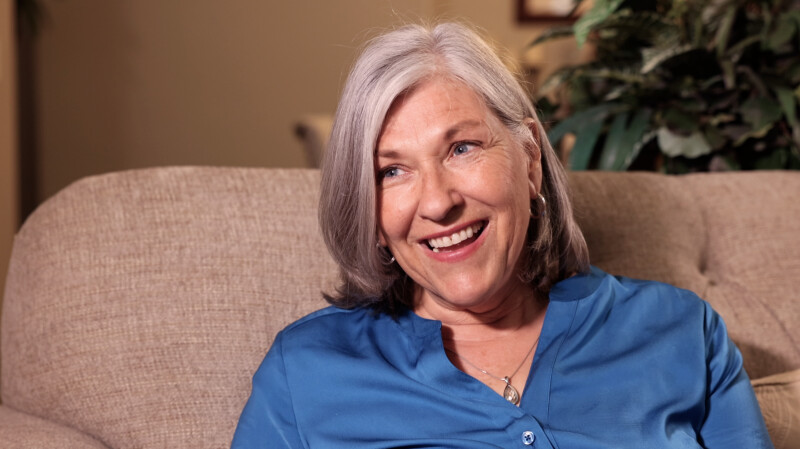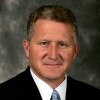Las Vegas, gambling mecca of the world. Destination for 24/7 fun and fling—remember, “What happens in Vegas, stays in Vegas!” This is the Vegas the world knows.
But let’s roll back the years to 1855. Who took the first gamble in the desert? None other than the “American Moses,” Brigham Young. This was a gamble unlike any other. No cards, no dice, no chips, and certainly no money was involved. The only wager involved was thirty men would be willing to leave their families, homes, and livelihoods to build a settlement in an area that was so dry the lizards would wear canteens.

The oasis would serve a dual purpose. It would provide a needed waystation along the Mormon Corridor, and it would form a mission to the local Native Americans.1 Though their mission lasted only two years, these missionaries planted seeds of goodness that would allow Latter-day Saints to influence the area for good for decades to come. What began as a modest fort resulted in a thriving Latter-day Saint community in Las Vegas and a temple of the Lord.
Local Vegas citizens today appreciate the immense contributions of their Latter-day Saint neighbors, symbolized by the stunning temple dedicated in 1989 which illuminates the eastern horizon—a stark contrast to the remnants of the “Old Las Vegas Mormon Fort,” a Nevada State Park that still marks the site of this first settlement.2 A second temple in the Las Vegas region, the Lone Mountain Nevada Temple, was recently announced in the October 2022 general conference, evidence that the influence of the Saints continues to blossom as the rose in southern Nevada.
▶ You may also like: Did you know the first baby born in the City of Las Vegas was a Latter-day Saint? New historical marker pays tribute
An Outsized Influence
Church members now number over 100,000 in the Vegas metropolitan region.3 Though they represent only about six percent of the total population of Las Vegas and Nevada, members of The Church of Jesus Christ are among the most influential body of citizens in a metro community numbering over two million people as well as throughout the entire state. The Saints worship statewide in over 360 congregations, with three missions and 34 Family History Centers to enrich communities and help solidify family relationships.4

Looking back on the outsized Latter-day Saint influence in Las Vegas, Brian Greenspun, editor, CEO, and owner of the Las Vegas Sun, has noted, “The LDS community was vibrant across every facet—politically, public service, charitable. … No other group of people came close.”5
Oscar Goodman and his wife, Carolyn, who have both served as mayor of Las Vegas (Oscar 1999–2011, Carolyn 2011–present) recognize the important contributions of Latter-day Saints. According to Oscar, Church members “have placed themselves in places of responsibility, … in order to shepherd what makes an area successful: roads, streets, schools, that kind of thing. Their presence [is] always felt; they [are] always well-respected.”6
Women Standing Up for Family

Latter-day Saint Heidi Gresham Wixom, a middle school teacher and community activist, led a successful charge to eliminate offensive signage in the Vegas area, stating, “We shouldn’t be forced to throw a quarter on the floor when we pass a billboard and want our kids to divert their eyes. … People forget [Las Vegas] is not just a tourist attraction. We are home to a million and a half people, where we live and drive and take our children.”7

Another catalytic Las Vegas Latter-day Saint woman, Judie Brailsford-Marcucci, teamed up with a Catholic “mover and shaker” named Lisa Mayo-DeRiso, and together they took a firm stand on moral issues in the community. This Latter-day Saint–Catholic team became a powerhouse. Mayo-DeRiso stated that since her family moved to Las Vegas in 1986, the Latter-day Saint community had been leading the way to address “quality of life” matters. She said, “Judie Brailsford and I took on the gaming companies with … a neighborhood protection bill. We took on billboards, liquor stores, and gaming near schools; cannabis dispensaries near churches and neighborhoods; and more. If not for the activism of the LDS community, our kids and neighborhoods would be negatively impacted by these noncompatible uses.”8
Brailsford-Marcucci remembers that she and Mayo-DeRiso realized that they had to put a stop to large casinos bleeding into family communities. Together they gathered twelve thousand signatures and successfully kept casinos outside of residential areas.9
Latter-day Saints in Public Office
A number of Latter-day Saints have been elected to office in Las Vegas. One highly respected Saint who has been heavily involved as an elected official is Bruce Woodbury, a former Clark County commissioner (1981–2009) who continues to hold the record for longest service as a Nevada commissioner. Recollecting his service as a commissioner, Woodbury stated, “I served for twenty-eight years … I was the founding member and chairman of the regional flood control district, and … some people kind of called me the ‘father of flood control’ and the ‘transportation czar.’” The city has commemorated Woodbury’s service by naming the I-215 Beltway after him, along with three city streets and a post office building.10
Another influential Latter-day Saint commissioner, who served two back-to-back terms (2010–2017), is Mary Beth Scow.11 In her service on the Board of Trustees for the Clark County School District, Scow says her most important responsibility was “keeping pandora in the box”—she worked to keep gaming in designated areas and away from neighborhoods.12
When asked why so many Latter-day Saints have been elected to public office, Scow remarked, “A lot of Latter-day Saints are interested in running for office for true reasons, and I think people see that. When you’re somebody that’s truly honest-hearted, you want to work for the benefit of the community. That resonated with people. There’s a trust that people can feel, and I believe that’s why we have so many members of the Church that are elected officials.”13
A “Profound Impact”
Well-known Las Vegas journalists Jon Ralston and John L. Smith have both described the Latter-day Saint influence on their local communities.
Ralston says that Church members’ “influence has been pervasive because it’s been so broad and so deep. … They were known for standing up, men of moral rectitude.”14
Smith says, “You cannot say that Las Vegas would be anywhere near what it is today without that tremendous influence of some very dedicated people who happen to be Mormon. … I don’t think there’s an area of Las Vegas life that has not been touched by the LDS faith.” He adds, “I think the[ir] greatest contribution is stability. … To have members of the community that are stabilizing influencers can’t be overstated; it’s so important.”15
Yet Latter-day Saints continue to be reciprocally influenced by good people outside the faith, like Senator Bryan, Lisa Mayo-DeRiso, and countless others. Current county commissioner Jim Gibson, a Latter-day Saint, says, “We’re helping with the heavy lifting; we’re not doing it all. … We are where we are in some part, no small part, because of our nonmember friends who worked with us, helped us, and then bore witness of the experience they had with us.16
Perhaps former Nevada State Senator and governor Richard Bryan encapsulated the Saints’ influence best: “The LDS community has had a profound impact on southern Nevada, dating back to the early founding of the mission in 1855. … They brought with them strong family values. Family was first—not second, not third—and the family structure impresses all. … They’re good people who helped to make Las Vegas a good city for all of us to live in.”17
▶ You may also like: The ‘crowning jewel’: Lesser-known stories behind the building of the Las Vegas temple
Editor’s note: Segments of this article are adapted from Fred E. Woods’ new book Bright Lights in the Desert: The Latter-day Saints of Las Vegas (2023), which chronicles the story of the Latter-day Saint influence in Las Vegas. A companion documentary film is available to watch on BYUtv.
Bright Lights in the Desert: The Latter-day Saints of Las Vegas
Notes
- See Fred E. Woods, A Gamble in the Desert: The Mormon Mission in Las Vegas, 1855–1857, (Salt Lake City: Mormon Historic Sites Foundation, 2005), 1.
- Old Las Vegas Mormon Fort State Historic Park, Nevada State Parks, parks.nv.gov.
- For more information about the Las Vegas Nevada Temple, see “The ‘crowning jewel’: Lesser-known stories behind the building of the Las Vegas temple,” LDSLiving.com.
- Facts and Statistics: Nevada, ChurchofJesusChrist.org.
- Brian Greenspun, Zoom interview by Fred E. Woods, February 11, 2021.
- Oscar Goodman, Zoom interview by Fred E. Woods, February 8, 2021; also Carolyn Goodman, interview by Fred E. Woods and Martin Andersen, June 24, 2020, Las Vegas.
- Brian Wargo, “Sign of the Times, Billboards under Fire,” Las Vegas Sun, May 18, 2006, 2.
- Lisa Mayo-DeRiso, email message to Fred E. Woods, February 22, 2021.
- Judie Brailsford-Marcucci, interview by Fred E. Woods, February 22, 2021, Las Vegas.
- Bruce Woodbury, interview.
- Michael Scott Davidson, “Clark County Commissioner Scow Surprises with Resignation Announcement,” Las Vegas Review-Journal, June 20, 2017, announced that Scow “abruptly announced that she will resign her seat this month.” Clark explained in a conversation prior to her March 6, 2020, interview with the author that she resigned due to family health reasons.
- Mary Beth Scow, interview by Fred E. Woods and Martin Anderson, March 6, 2020, Henderson, Nevada, transcript in possession of author.
- Mary Beth Scow, interview.
- Jon Ralston, interview with Fred E. Woods and Martin Andersen, June 22, 2020, Las Vegas.
- John L. Smith, zoom interview by Fred E. Woods, 2021.
- Jim Gibson, Zoom interview by Fred E. Woods, February 10, 2021, transcript in possession of author.
- Senator Richard Bryan, interview by Fred E. Woods and Martin Andersen, June 23, 2020, Las Vegas.



